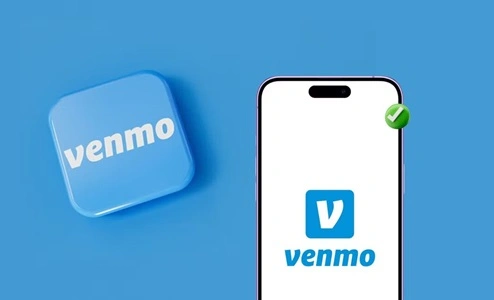Venmo, a peer-to-peer (P2P) payment app, has become one of the most popular ways to send and receive money instantly. Whether splitting a dinner bill, paying rent to a roommate, or reimbursing a friend for concert tickets, Venmo makes cashless transactions convenient and straightforward. Owned by PayPal, Venmo has gained a loyal following among users, especially millennials and Gen Z. However, like any financial service, it comes with both advantages and disadvantages.
This article explores the pros and cons of Venmo, helping you decide if it’s the right tool for your financial needs.
What is Venmo?

Venmo is a digital wallet and P2P payment app that allows users to send and receive money using their smartphones. Launched in 2009 and acquired by PayPal in 2013, Venmo combines functionality with social interaction, enabling users to share payment details publicly or privately. With over 80 million users in the U.S., Venmo has become synonymous with fast and hassle-free digital payments.
Users can link their Venmo account to their bank accounts, debit cards, or credit cards to transfer funds. Payments can be sent to other Venmo users using their username, phone number, or QR code.
The Pros of Venmo
1. Ease of Use
Venmo’s user-friendly interface makes sending and receiving money simple. The app is intuitive, allowing users to navigate its features without any steep learning curve. Transactions can be completed in seconds, making it ideal for quick exchanges.
2. Instant Money Transfers
Venmo allows instant money transfers between users, eliminating the need for cash or checks. Once funds are sent, they appear in the recipient’s Venmo account immediately, which is convenient for time-sensitive payments.
3. Social Integration
One of Venmo’s unique features is its social feed, where users can share payment details (such as emojis or descriptions) with friends. While the dollar amount is private, this social aspect makes financial transactions feel more personal and fun.
4. Free P2P Transactions
Sending money to friends and family is free when linked to a bank account or debit card. This eliminates the fees associated with traditional bank transfers or cash withdrawals from ATMs.
5. Wide Acceptance
Venmo is not just for person-to-person transactions; it is widely accepted as a payment method by businesses, both online and in-store. Many retailers and apps allow Venmo payments, making it a versatile tool for shopping.
6. Splitting Bills
Venmo makes splitting bills effortless. Whether it’s rent, utilities, or a group dinner, users can split costs among multiple people and send payment requests, ensuring everyone pays their fair share.
7. Instant Transfer to Bank Accounts
Venmo offers an Instant Transfer feature that allows users to move funds to their bank account in minutes. While there’s a small fee for this service, it’s invaluable for users who need quick access to their money.
8. Venmo Debit and Credit Cards
Venmo offers its own branded debit and credit cards, giving users more flexibility in how they spend their funds. The Venmo Debit Card allows users to access their Venmo balance directly, while the Venmo Credit Card offers rewards for spending.
9. Secure Transactions
Venmo uses encryption and security protocols to protect user data and financial information. Features like PIN codes, biometric authentication, and transaction monitoring add layers of security.
10. Payment Flexibility
Users can fund payments through a linked bank account, debit card, or credit card. This flexibility allows users to choose the funding source that works best for their situation.
The Cons of Venmo
1. Privacy Concerns
Venmo’s social feed, while fun for some users, raises privacy concerns. If users do not adjust their settings, transaction details are visible to the public by default. This could lead to oversharing or unintentional exposure of personal information.
2. Fees for Certain Transactions
While basic P2P payments are free, Venmo charges fees for:
- Using a credit card to fund payments (3% of the transaction amount).
- Instant transfers to a bank account (1.75% fee with a $0.25 minimum and $25 maximum).
- Business transactions, which incur a standard processing fee.
These fees can add up, especially for frequent users.
3. Limited Availability
Venmo is only available in the United States. International users cannot access the app, which limits its functionality for those needing to send or receive money globally.
4. Potential for Fraud
Despite security measures, Venmo is not immune to scams. Fraudulent transactions, phishing attempts, and unauthorized access are risks users may face if they are not cautious. Venmo explicitly states that it is intended for trusted transactions and discourages use with unknown parties.
5. No Buyer Protection
Venmo does not offer buyer protection for goods or services purchased outside its approved business transactions. This means users who send money for purchases through Venmo have little recourse if the product or service is not delivered.
6. Delayed Standard Transfers
While Venmo offers instant transfers for a fee, standard bank transfers take 1-3 business days to process. This delay may be inconvenient for users needing immediate access to funds.
7. Limited Financial Tools
Unlike some digital wallets, Venmo does not offer advanced financial tools such as budgeting or savings features. Users looking for a more comprehensive financial management app may find Venmo lacking.
8. Transaction Limits
Venmo imposes transaction limits, especially for new or unverified users. For example, the weekly spending limit is $299.99 for unverified accounts, which may be restrictive for users making larger transactions. Verifying your account increases these limits, but it requires providing sensitive information.
9. Reliance on Internet Access
Venmo requires an internet connection to function, which can be inconvenient in areas with poor connectivity. This dependency on online access limits its usability compared to cash or checks.
10. Dependence on Linked Accounts
Users must link a bank account, debit card, or credit card to their Venmo account. This reliance on external accounts may deter those who prefer standalone financial services or are wary of sharing banking information.
Who Should Use Venmo?
Venmo is an excellent choice for:
- Friends and Family: Users who frequently split bills, share expenses, or send money to trusted individuals.
- Tech-Savvy Individuals: People who are comfortable using digital wallets and smartphones for financial transactions.
- Small Business Owners: Entrepreneurs or small business owners who want to accept payments through a widely used app.
- Shoppers: Individuals who want a versatile payment method accepted by many retailers.
However, it may not be ideal for:
- International Users: Those needing to send money outside the U.S.
- High-Value Transactions: Users who frequently need to send or receive large amounts.
- Individuals Seeking Privacy: People concerned about sharing transaction details or having their financial data stored online.
Tips for Using Venmo Effectively
- Adjust Privacy Settings: Set transactions to “Private” or “Friends” to control who sees your payment details.
- Verify Recipients: Double-check usernames, phone numbers, or QR codes to ensure you send money to the correct person.
- Avoid Scams: Use Venmo only with trusted individuals and avoid sending payments for goods or services unless through an approved business account.
- Link a Debit Card or Bank Account: To avoid fees, use a debit card or bank account instead of a credit card for payments.
- Monitor Your Transactions: Regularly check your transaction history to identify any unauthorized activity.
Conclusion
Venmo is a powerful and convenient tool for peer-to-peer payments, offering ease of use, instant transfers, and a social element that sets it apart from other payment apps. Its affordability for basic transactions and wide acceptance among businesses make it a versatile choice for many users.
However, it’s not without its drawbacks. Privacy concerns, fees for certain transactions, and potential fraud risks mean users should approach the app with caution and adjust their settings to enhance security. By weighing the pros and cons of Venmo, you can determine if this app suits your financial habits and needs. For those who value simplicity and speed in money transfers, Venmo remains a top contender in the digital payment space.



